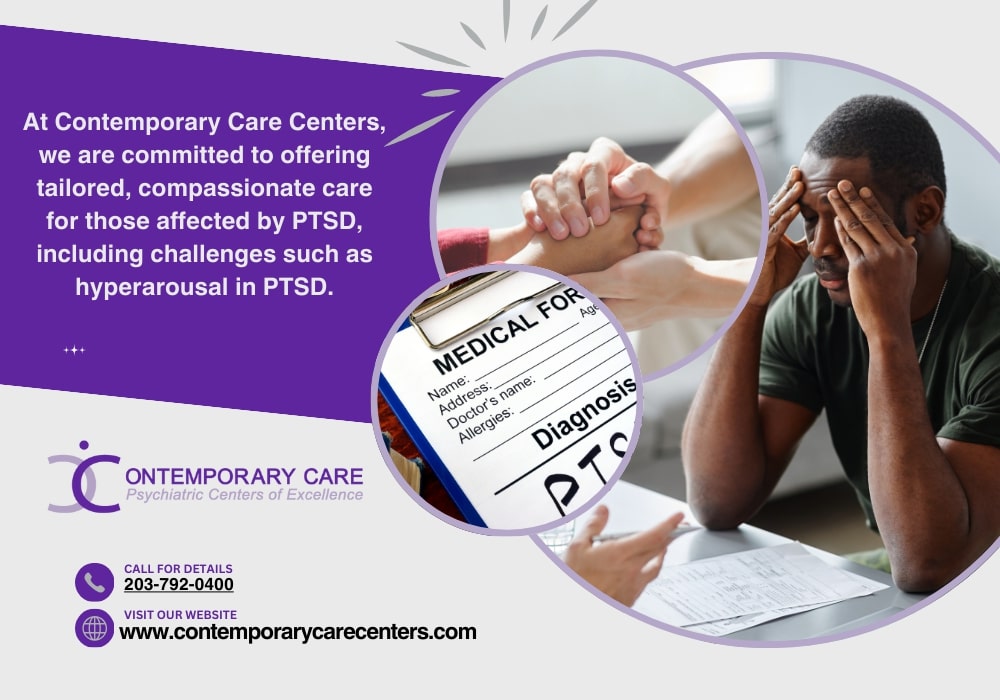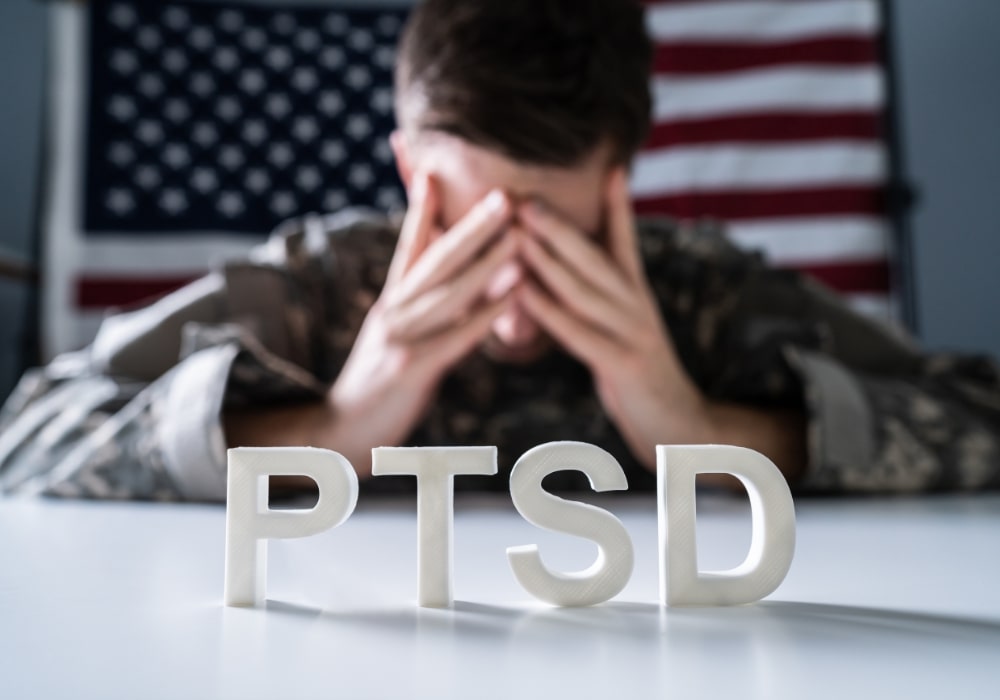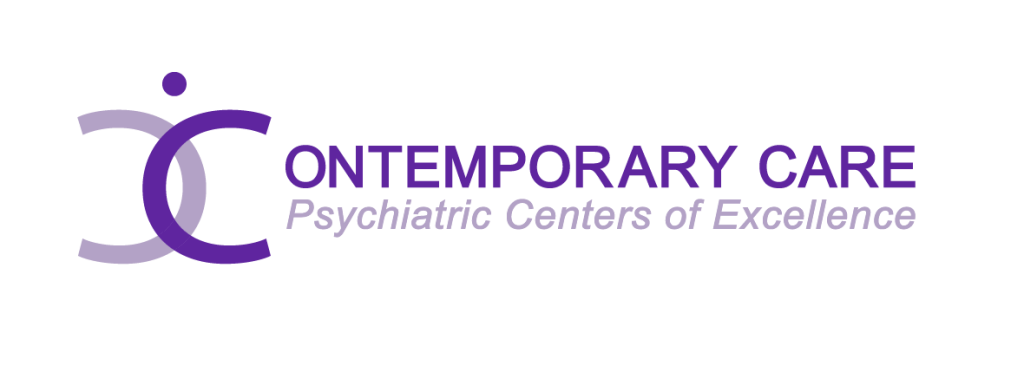PTSD (Post-Traumatic Stress Disorder) is a complex mental health condition triggered by a traumatic event. One of the most significant and challenging symptoms associated with PTSD is hyperarousal. But what exactly is hyperarousal in PTSD? How does it manifest, and what can be done to manage it? This blog post explores what hyperarousal in PTSD is, the symptoms you should look out for, and effective ways to cope with this condition.
Understanding PTSD: A Quick Overview
To fully grasp what hyperarousal in PTSD is, it’s essential to understand PTSD as a whole. PTSD develops after someone experiences or witnesses a traumatic event such as a natural disaster, assault, war, or an accident. The condition is marked by symptoms like flashbacks, avoidance, negative changes in mood, and, importantly, hyperarousal.
How Hyperarousal Fits Into the Bigger Picture
Within PTSD, hyperarousal is categorized as one of the four main symptom clusters. It involves an exaggerated alertness and sensitivity to potential threats, even in safe environments. Hyperarousal in PTSD can make a person feel constantly on edge, affecting every aspect of their daily life.
What is Hyperarousal in PTSD?
Hyperarousal in PTSD is one of the core symptoms that make the condition so challenging to manage. But what exactly does this term mean? In simple terms, hyperarousal in PTSD refers to a state of heightened alertness and sensitivity to perceived threats, even when there is no actual danger. It’s like your body’s “fight-or-flight” response is stuck in overdrive, constantly preparing you for a threat that isn’t there.
Breaking Down the Concept of What is Hyperarousal in PTSD
When discussing what is hyperarousal in PTSD, it’s crucial to understand how this symptom emerges. Hyperarousal in PTSD is the result of the brain’s difficulty in switching off its alarm system after a traumatic experience. After trauma, the brain remains hypervigilant, constantly on the lookout for danger, leading to an inability to relax or feel safe. This constant arousal can manifest as insomnia, irritability, exaggerated startle responses, and a general sense of unease.
Why is Hyperarousal in PTSD a Critical Symptom?
The reason hyperarousal in PTSD is considered critical is due to its profound impact on daily life. This symptom doesn’t just cause discomfort—it creates a pervasive feeling of being constantly “on edge.” The continuous state of alertness can interfere with sleep, concentration, and emotional stability, making it difficult to engage in everyday activities. For those with hyperarousal in PTSD, life becomes a struggle to manage stress and avoid triggers, which can significantly affect their quality of life.
The Connection Between Trauma and Hyperarousal
Hyperarousal in PTSD is directly linked to the way trauma impacts the brain. When a person encounters a traumatic event, the brain naturally triggers the fight-or-flight response, designed to keep us safe in dangerous situations. In those with PTSD, this system remains in a state of heightened activity long after the trauma has passed, leading to persistent hyperarousal.
How Trauma Impacts the Brain
Trauma rewires the brain, particularly affecting areas responsible for managing fear and stress, like the amygdala, hippocampus, and prefrontal cortex. The brain starts to see danger everywhere, even in safe environments. This constant state of high alert is what fuels hyperarousal in PTSD. The brain becomes stuck in a loop of perceiving threats, making it nearly impossible to relax or feel secure.
The Fight-or-Flight Response and Its Role in Hyperarousal in PTSD
The fight-or-flight response is a survival mechanism that prepares the body to confront or escape danger. For those with hyperarousal in PTSD, this response doesn’t shut down, even in non-threatening situations. Everyday occurrences, such as loud noises or sudden movements, can trigger this response, causing a surge in stress hormones like adrenaline. This persistent activation of the fight-or-flight response is at the heart of hyperarousal in PTSD, leaving individuals feeling anxious, restless, and constantly on edge.
Key Symptoms of Hyperarousal in PTSD
Hyperarousal in PTSD is characterized by a range of symptoms that affect both the body and mind. Understanding these symptoms is essential for recognizing how this condition impacts daily life and well-being. Let’s explore the common signs of hyperarousal in PTSD and how they manifest physically and emotionally.
Overview of Common Symptoms
Hyperarousal in PTSD often presents as a persistent state of tension and alertness. Individuals experiencing this symptom may find themselves constantly on edge, unable to relax, and always scanning their environment for potential threats. This continuous state of arousal makes it difficult to function normally, as the body is stuck in a constant state of high alert.
The Physical and Emotional Signs of Hyperarousal in PTSD
Hyperarousal in PTSD can lead to a variety of physical symptoms. These include:
- Restlessness and Constant Alertness: A person might feel jittery, easily startled, and constantly on edge as if danger is hiding around every corner.
- Trouble Sleeping and Insomnia: Difficulty falling asleep or staying asleep is common, as the brain refuses to “switch off” from its alert state.
- Increased Heart Rate and Sweating: The body reacts as if it’s in a dangerous situation, even when it isn’t, leading to physical signs like a racing heart and excessive sweating.
On the emotional and behavioral side, hyperarousal in PTSD often includes:
- Irritability and Anger Outbursts: Individuals may struggle with controlling their emotions, leading to frequent irritability and disproportionate anger in response to minor stressors.
- Difficulty Concentrating: The constant state of alertness can make it hard to focus on everyday tasks, leading to frustration and distraction.
- Hypervigilance: This is a state of being overly watchful, where a person feels they must constantly monitor their surroundings for danger, even in safe environments.
Physical Symptoms of Hyperarousal
Hyperarousal in PTSD manifests primarily through a series of physical symptoms that can severely disrupt daily life. The body remains in a heightened state of alertness, which can be exhausting and overwhelming. Let’s break down the key physical symptoms of what is hyperarousal in PTSD.
Constant Alertness and Restlessness
One of the most common signs of hyperarousal in PTSD is an ongoing state of restlessness. Individuals often feel they are constantly on guard as if preparing for something bad to happen. This heightened sense of alertness is a core feature of what hyperarousal in PTSD looks like and makes it difficult for people to relax, even in safe environments. It’s as if the body never fully “stands down” from its defensive posture, leading to chronic fatigue and tension.
Trouble Sleeping and Insomnia
Sleep disturbances are a hallmark of hyperarousal in PTSD. The inability to fall or stay asleep is largely due to the mind’s refusal to disengage from its alert state. For someone with hyperarousal in PTSD, bedtime can be particularly stressful, as the brain continues to scan for threats, making restful sleep nearly impossible. The resulting insomnia further exacerbates feelings of irritability and anxiety.
Startling Easily
Being easily startled is another prominent physical symptom of hyperarousal in PTSD. Even small, unexpected noises or movements can cause an exaggerated startle response. This reaction is driven by the brain’s hyperactive threat-detection system, which interprets minor stimuli as significant dangers. The constant tension and overreaction to such triggers are defining aspects of what hyperarousal in PTSD entails.
Emotional and Behavioral Symptoms of Hyperarousal
Hyperarousal in PTSD doesn’t just impact physical well-being; it also manifests through emotional and behavioral challenges that can deeply affect daily life and relationships. These symptoms highlight the mental toll of what is hyperarousal in PTSD and are often the most noticeable signs for those living with or supporting someone with PTSD.
Irritability and Anger Outbursts
One of the common emotional symptoms of hyperarousal in PTSD is persistent irritability. Small frustrations or inconveniences can lead to intense anger outbursts. This heightened irritability is driven by the body’s constant tension and alertness, making it difficult to manage emotions. Even minor annoyances can feel overwhelming, leading to disproportionate reactions that strain relationships and social interactions.
Difficulty Concentrating
Concentration issues are a significant behavioral symptom of hyperarousal in PTSD. The constant state of alertness makes it challenging for individuals to focus on tasks or engage in activities that require sustained attention. Their mind is often preoccupied with scanning for potential threats or dealing with intrusive thoughts related to past trauma, which severely hinders productivity and engagement in everyday tasks.
Overreaction to Minor Stressors
People with hyperarousal in PTSD often overreact to small stressors. Situations that might be manageable for others can trigger intense responses in those experiencing hyperarousal in PTSD. This overreaction is rooted in the brain’s amplified stress response, where even minor setbacks or triggers can lead to heightened anxiety or panic. This symptom underscores the pervasive nature of what hyperarousal in PTSD entails, making it difficult for individuals to navigate daily life smoothly.
The Impact of Hyperarousal on Daily Life
Hyperarousal in PTSD is more than just an internal battle—it has far-reaching effects on every aspect of daily life. From relationships to professional environments, the presence of what is hyperarousal in PTSD can make even routine activities feel daunting and unmanageable.
How Hyperarousal in PTSD Disrupts Relationships and Social Life
Constant irritability and heightened alertness can strain relationships, leading to frequent conflicts and social withdrawal. Individuals often avoid social settings due to anxiety, which increases isolation and loneliness.
Struggles in the Workplace or School Due to Hyperarousal in PTSD
In work or school environments, hyperarousal in PTSD can cause concentration issues, decreased productivity, and difficulty collaborating with others. The heightened stress and anxiety may lead to avoidance of critical tasks or interactions, negatively impacting career and academic growth.
Hypervigilance and Its Role in Hyperarousal
What is hypervigilance? Hypervigilance is an elevated level of sensory awareness where a person remains overly attentive to potential threats. It’s a continuous, intense focus on spotting danger, even when there is no actual risk. For individuals experiencing hyperarousal in PTSD, hypervigilance is a key symptom that keeps them perpetually on edge, always anticipating the worst.
How Hypervigilance Relates to Hyperarousal in PTSD
Hypervigilance is a core aspect of hyperarousal in PTSD because it stems from the brain’s inability to switch off its alert system. When asking what is hyperarousal in PTSD, hypervigilance is often a central element. The connection between the two includes:
- Fight-or-Flight Mode: The brain remains in survival mode, continuously anticipating danger.
- Constant Anxiety: The persistent state of alertness contributes to chronic stress and fatigue.
- Difficulty Relaxing: The inability to feel calm or safe is a significant barrier to recovery.
Diagnosing Hyperarousal in PTSD
Recognizing and diagnosing hyperarousal in PTSD is crucial for effective treatment and management. Mental health professionals consider this symptom a significant indicator of PTSD and use it to address the condition. Understanding what is hyperarousal in PTSD and how it’s diagnosed can help in seeking the right support early.
How Mental Health Professionals Identify Hyperarousal in PTSD
Mental health professionals use a combination of evaluations, interviews, and diagnostic tools to assess hyperarousal in PTSD. The process typically includes:
- Clinical Interviews: Mental health providers ask detailed questions to determine if a patient is experiencing symptoms like constant alertness, irritability, and difficulty sleeping—key indicators of hyperarousal in PTSD.
- Standardized Assessments: Tools like the Clinician-Administered PTSD Scale (CAPS) and other PTSD questionnaires help quantify the severity of hyperarousal in PTSD.
- Behavioral Observations: During evaluations, therapists observe signs of hypervigilance, exaggerated startle responses, and signs of restlessness that are commonly associated with what is hyperarousal in PTSD.
The Importance of Early Diagnosis
Early identification of hyperarousal in PTSD is essential because it allows for timely intervention, which can significantly improve outcomes. The longer hyperarousal in PTSD goes untreated, the more disruptive it becomes, impacting sleep, relationships, and overall mental health. Early diagnosis helps in:
- Implementing Effective Treatments: Therapies like Cognitive Behavioral Therapy (CBT) and Eye Movement Desensitization and Reprocessing (EMDR) are more effective when started early.
- Preventing Further Complications: Unchecked hyperarousal in PTSD can lead to worsening anxiety, depression, and even substance abuse as individuals seek ways to cope with the constant stress.
- Improving Quality of Life: With early treatment, individuals can begin to manage hyperarousal in PTSD, regain control over their lives, and reduce the impact of this distressing symptom.
Diagnostic Criteria and Tools Used
Diagnosing hyperarousal in PTSD requires a thorough evaluation by mental health professionals who utilize specific criteria and tools. Understanding these methods is key to grasping how what is hyperarousal in PTSD is identified and addressed in clinical settings.
Standard Assessment Methods
Professionals rely on standardized tools and criteria to diagnose hyperarousal in PTSD. These include:
- Clinician-Administered PTSD Scale (CAPS): One of the most widely used tools, CAPS involves structured interviews designed to assess the presence and severity of PTSD symptoms, including hyperarousal.
- PTSD Checklist (PCL): This self-report questionnaire helps in screening for PTSD symptoms, focusing on areas like hypervigilance, irritability, and sleep disturbances—all core aspects of hyperarousal in PTSD.
- Diagnostic and Statistical Manual of Mental Disorders (DSM-5) Criteria: The DSM-5 outlines specific criteria for diagnosing PTSD, with hyperarousal as a critical symptom cluster that needs to be met for an official diagnosis.
Screening for Hyperarousal in PTSD During Evaluations
During evaluations, clinicians specifically screen for signs of hyperarousal in PTSD. They assess for:
- Restlessness and Constant Alertness: These questions relate to understanding whether the individual feels constantly on edge or finds it difficult to relax.
- Sleep Disturbances and Insomnia: Clinicians inquire about trouble falling asleep or staying asleep, which are common indicators of hyperarousal in PTSD.
- Startle Responses and Hypervigilance: Evaluations often include observations of exaggerated startle reactions or hyperawareness, both of which are closely tied to what is hyperarousal in PTSD.
Treatment Options for Hyperarousal in PTSD
Effectively managing hyperarousal in PTSD often requires a combination of therapeutic approaches and medication. Addressing what is hyperarousal in PTSD involves reducing the symptoms that keep individuals in a constant state of heightened alertness, helping them regain control and improve their quality of life.
Therapy Options: CBT, EMDR, and More
Several therapy options are commonly used to treat hyperarousal in PTSD:
- Cognitive Behavioral Therapy (CBT): CBT helps change negative thought patterns that drive hyperarousal in PTSD. Through structured sessions, individuals learn coping strategies to manage their symptoms.
- Eye Movement Desensitization and Reprocessing (EMDR): EMDR focuses on processing traumatic memories while using guided eye movements, which can reduce the emotional intensity linked to hyperarousal in PTSD.
- Exposure Therapy: This therapy gradually exposes individuals to feared situations in a safe environment, helping them desensitize to triggers that cause hyperarousal in PTSD.
Medication Management
Medication can be an important part of managing hyperarousal in PTSD, especially when therapy alone isn’t sufficient:
- Antidepressants: SSRIs like sertraline and paroxetine help regulate mood and reduce hyperarousal in PTSD symptoms.
- Anti-anxiety Medications: These offer short-term relief from the constant alertness and anxiety linked to what is hyperarousal in PTSD.
- Sleep Aids: For those struggling with insomnia due to hyperarousal in PTSD, sleep medications can improve rest and reduce stress.
How to Support Someone Experiencing Hyperarousal in PTSD
Supporting a loved one with hyperarousal in PTSD requires understanding and patience. Recognizing what is hyperarousal in PTSD is the first step in offering effective help.
Practical Tips for Friends and Family
- Listen Without Judgment: Sometimes, simply being there and offering a non-judgmental ear can provide immense comfort to someone experiencing hyperarousal in PTSD.
- Avoid Triggers: Be mindful of environments or actions that may intensify hyperarousal in PTSD symptoms, such as loud noises or sudden movements.
- Encourage Routine and Stability: Help create a calming, predictable environment that reduces stress and supports better management of what is hyperarousal in PTSD.
Resources for Further Learning
Learning more about hyperarousal in PTSD equips you to support your loved one. Consider exploring:
- Books on PTSD: Titles like “The Body Keeps the Score” offer deep insights into trauma and hyperarousal.
- Online Support Groups: Connecting with others facing similar challenges can provide shared experiences and coping strategies.
- Therapist-Led Workshops: Professionals offer workshops designed to educate families on supporting those with hyperarousal in PTSD.
FAQs
- What triggers hyperarousal in PTSD? Hyperarousal in PTSD is often triggered by reminders of the traumatic event, loud noises, or even stressful situations in everyday life.
- Can hyperarousal go away on its own? While symptoms may lessen over time, professional treatment is usually necessary to fully manage hyperarousal in PTSD.
- How is hyperarousal different from anxiety? While both involve heightened alertness, hyperarousal is specifically tied to PTSD and is more about being in a constant state of readiness for danger.
- What are the best ways to manage hyperarousal? Therapy, medication, mindfulness, and a structured routine are all effective ways to manage hyperarousal in PTSD.
- Is hyperarousal in PTSD curable? Although there is no cure, the right treatment can help many people greatly reduce their symptoms and lead a fulfilling life.

Start Your Journey to Healing Today
At Contemporary Care Centers, we are committed to offering tailored, compassionate care for those affected by PTSD, including challenges such as hyperarousal in PTSD. Our experienced team of mental health professionals provides cutting-edge treatments and holistic support to address the complexities of PTSD. From advanced therapies like CBT and EMDR to lifestyle guidance and medication management, we support every step of the recovery process.
Our cutting-edge facilities and friendly, accommodating environment ensure you receive the best possible care in a setting designed for healing and comfort. Whether seeking help for yourself or a loved one, Contemporary Care Centers offers hope and a path to a more balanced, fulfilling life. Contact us today to learn how we can help you manage hyperarousal in PTSD and embark on your journey toward recovery. Your path to wellness starts with Contemporary Care Centers—where your well-being is our top priority.



